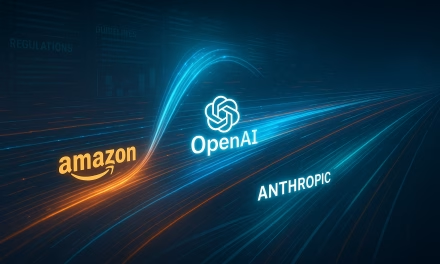In what may be the most significant power play in artificial intelligence history, Elon Musk’s xAI has just secured a staggering $10 billion in combined debt and equity financing, positioning itself as the most formidable challenger to OpenAI’s dominance in the AI landscape. This massive capital injection, confirmed by Morgan Stanley on July 1st, 2025, represents more than just another funding round—it’s a declaration of war in the AI arms race.
The Mega-Deal That Shook Silicon Valley
The $10 billion raise, split evenly between $5 billion in secured notes and term loans and $5 billion in strategic equity investments, was reportedly oversubscribed with participation from “prominent global debt investors.” Morgan Stanley, which led the financing, described the deal as supporting “xAI’s continued development of cutting-edge AI solutions, including one of the world’s largest data centers and its flagship Grok platform.”
This funding round catapults xAI into the upper echelon of AI companies, with valuations now ranging between $80-200 billion, up dramatically from its $50 billion valuation in 2024. While still trailing OpenAI’s astronomical $300 billion valuation following its recent $40 billion funding round, xAI has positioned itself as the most serious challenger to the ChatGPT maker’s throne.
The Colossus Advantage: Building the World’s Largest AI Supercomputer
At the heart of xAI’s strategy lies Colossus, its Memphis-based supercomputer facility that already houses an unprecedented 200,000 Nvidia H100 GPUs—double the original 100,000 when it launched. This massive computational infrastructure represents one of the world’s largest AI training facilities, giving xAI the raw power needed to compete with established players.
The fresh capital will fuel further expansion of this AI fortress, with xAI having already purchased a second 1 million square foot site in Memphis that could accommodate up to 350,000 GPUs. The facility will feature what’s being described as the world’s largest deployment of Tesla Megapack batteries for backup power, ensuring uninterrupted AI training operations.
Grok vs. ChatGPT: The Battle for AI Supremacy
The competition between xAI’s Grok and OpenAI’s ChatGPT has intensified dramatically in 2025. Grok-3, launched in February 2025, has demonstrated superior performance in specific benchmarks, including:
- Mathematics (AIME 2025): Grok-3 scored 93.3% compared to ChatGPT’s 79%
- Coding (LiveCodeBench): Grok-3 achieved 79.4% versus ChatGPT’s 72.9%
- Real-time data integration: Grok’s integration with X (formerly Twitter) provides current information access
- Fewer content restrictions: Grok offers more open responses compared to ChatGPT’s safety-focused approach
While OpenAI maintains advantages in stability, general-purpose capabilities, and broader ecosystem integration with its GPT-4o model and specialized reasoning models o1 and o3, Grok’s rapid improvement trajectory and unique positioning have made it a formidable competitor.
The Revenue Race: Ambitious Growth Projections
xAI’s financial projections are nothing short of audacious. The company forecasts $1 billion in revenue for 2025, with explosive growth targeting $14 billion by 2029. The company projects positive EBITDA by 2027, demonstrating confidence in its ability to monetize its AI capabilities rapidly.
These projections put xAI on a collision course with OpenAI, which is reportedly targeting $4 billion in revenue by the end of 2024, and Anthropic, which is on pace to generate $1 billion this year. The revenue race adds another dimension to the competitive landscape, as investors increasingly focus on commercial viability alongside technological capabilities.
Strategic Implications: More Than Just Money
The $10 billion raise represents more than capital—it’s a strategic statement about the future of AI. By securing both debt and equity financing, xAI has demonstrated its ability to attract diverse investor types, from traditional lenders to strategic equity partners including Nvidia and AMD.
The funding also enables xAI to pursue aggressive talent acquisition, infrastructure expansion, and research and development initiatives that were previously constrained by capital limitations. With Musk’s track record of disrupting established industries through Tesla and SpaceX, the AI establishment has reason to take this challenge seriously.
The Broader AI Arms Race Context
xAI’s massive funding round occurs against the backdrop of unprecedented investment in AI infrastructure. The global AI funding landscape in 2024 saw investments surge 62% to $110 billion, with mega-deals becoming the norm rather than the exception. OpenAI’s $40 billion round, Anthropic’s $13.7 billion total funding, and now xAI’s $10 billion raise demonstrate the enormous capital requirements for competing at the frontier of AI development.
This capital intensity reflects the reality that AI leadership requires not just algorithmic innovation but massive computational infrastructure, top-tier talent, and sustained investment in research and development. The companies that can secure and deploy capital most effectively will likely determine the future direction of artificial intelligence.
What This Means for the Industry
The implications of xAI’s funding success extend far beyond the company itself:
- Increased Competition: OpenAI now faces its most well-funded and technically capable challenger
- Innovation Acceleration: The competitive pressure will likely accelerate AI development across all players
- Market Validation: The successful raise validates the enormous market opportunity in AI infrastructure and applications
- Talent Wars: Expect intensified competition for top AI researchers and engineers
- Infrastructure Arms Race: The focus on massive GPU deployments will continue driving demand for AI hardware
The Road Ahead: Challenges and Opportunities
Despite the massive funding success, xAI faces significant challenges in its quest to challenge OpenAI’s dominance. The company must execute flawlessly on infrastructure deployment, model development, and market penetration while competing against established players with significant head starts.
However, xAI’s unique positioning—with integration into the X ecosystem, fewer content restrictions, and Musk’s proven ability to disrupt established industries—provides distinct advantages. The company’s focus on “truthful, competent, and maximally beneficial” AI systems resonates with users seeking alternatives to more restrictive AI platforms.
Conclusion: A New Chapter in AI History
Elon Musk’s xAI has just fired the biggest shot yet in the AI arms race. With $10 billion in fresh capital, the world’s largest AI supercomputer, and a rapidly improving Grok platform, xAI has positioned itself as the most credible challenger to OpenAI’s dominance.
This funding round marks a pivotal moment in AI history—the end of OpenAI’s unchallenged leadership and the beginning of a true competitive battle for AI supremacy. As these AI titans clash, the ultimate winners will be the users and industries that benefit from the accelerated innovation this competition will inevitably produce.
The AI arms race has officially entered its most intense phase, and with $10 billion in ammunition, xAI is ready for battle. The question now isn’t whether xAI can compete with OpenAI—it’s whether OpenAI can maintain its lead against Musk’s most ambitious venture yet.





